Dedicated to advancing scholarly and public understanding of the past, present, and future of western North America, the Center supports research, teaching, and reporting about western land and life in the United States, Canada, and Mexico.
Remembering Advisory Council Member Pamela Rymer
The Center is saddened to mark the passing on Sept. 21 of Judge Pamela Ann Rymer, who served with distinction as a Federal Judge, Stanford Trustee and member of the Center's Advisory Council. Judge Rymer, who was 70 years old, had stepped down from the council earlier this year.
A graduate of Stanford Law School in 1964, she served as a Federal Judge for almost three decades, most recently on the U.S. Court of Appeals for the Ninth Circuit.
We would like to offer our most heartfelt condolences to Judge Rymer's family and friends.
To read more about Judge Rymer's exceptional life and career, a full obituary is available at the Stanford News Service.
Autumn 2011 Courses on the American West
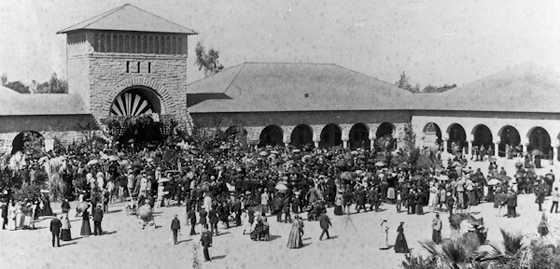
Photo: Stanford University's first Opening Day, 1891
Welcome back to another great year at Stanford!
Autumn quarter begins this week. And this year, as in previous years, nearly 100 courses on the American West will be offered across the campus.
The choices span a wide range of disciplines, ranging from English to Earth Systems. Highlights from Autumn 2011 include "Celluloid America: Explorations in Film and History," "California's 'Three Strikes' Law & Proportionate Sentencing," and "Environmental and Geological Field Studies in the Rocky Mountains."
Summer on the Skagit River, Hydropower, and Fall Runs of Chinook and Pink Salmon
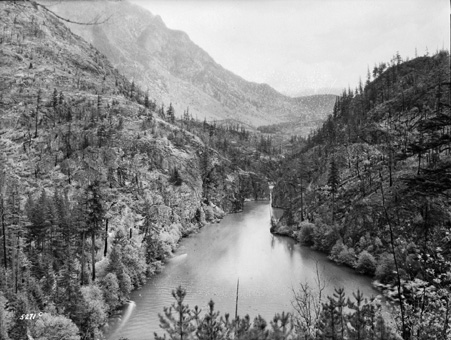
By Emily Pollock
B.A. Candidate in Anthropology, 2013
 My summer as an intern at Seattle City Light has ended. It certainly doesn’t feel like it’s been three months since I left Stanford for — literally — greener pastures in the Northwest. The only things heralding the start of a new school year are the changing leaves and the completion of my project: a guide to a full day tour of the Skagit River Hydroelectric Project.
My summer as an intern at Seattle City Light has ended. It certainly doesn’t feel like it’s been three months since I left Stanford for — literally — greener pastures in the Northwest. The only things heralding the start of a new school year are the changing leaves and the completion of my project: a guide to a full day tour of the Skagit River Hydroelectric Project.
A summer’s worth of interviews, research, and personal experience have been blended together, printed, and bound into a 70-page tour itinerary and script complete with appendix and some really great historical photographs from the Seattle Municipal Archives. The full-day tour experience of the Skagit River Hydroelectric Project starts in Newhalem, the Seattle City Light company town, wanders through Ladder Creek Falls Garden, tours Diablo Lake from Diablo Dam to Ross Dam, and finishes with a complete tour of Ross Powerhouse — the first time non-Seattle City Light employees have been allowed inside the powerhouse since 9/11. The first tours start September 17th and run through mid-October, conveniently timed so that the tourists can see the incredible masses of Pink and Chinook salmon spawning in the Skagit River now.
I came to know the Skagit River Basin more closely than I had ever expected, but I also came to learn a lot about myself. I’ve found that regardless of the subject of study, it is the interaction of people, the social aspect of the job, which feeds my passion and drive to do my best work. I was good at researching and translating the material into interesting points for the tour, but my best days were always those where I was collaborating with and learning from my fellow employees. I also learned that I’m the happiest when I’m in nature (a plus of this summer’s job). All in all, it was a good summer and a very rewarding experience.
And if you're in the neighborhood this fall, I hope you'll visit the Skagit River!
Read more at the Out West Blog for Summer Interns »
Connecting California
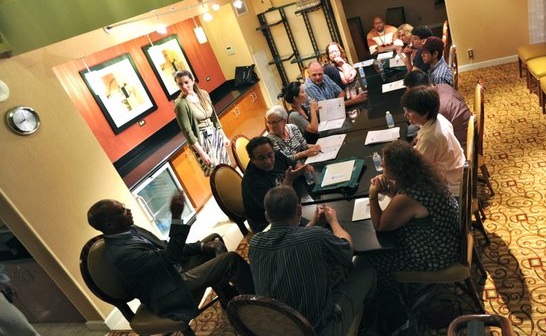
Photo: What's Next California
This fall, the Center is sponsoring a series of "Connecting California" evening public events with Zócalo Public Square and the New America Foundation. We hope you can join us for these exciting public events.
On Wednesday, September 21, in San Francisco, we'll be discussing "How Do We Put the People Back in the Initiative Process" with a panel of experts from California and around the world.
On Wednesday, October 26, at Stanford, we will release and discuss a new report "Hear Us Now?" which surveys how California governments use technology and proposes ways of measuring and replicating the success of their e-government initiatives.
Earlier this summer, the Center co-sponsored a "deliberative poll" that brought more than 400 Californians together for a weekend to map out thoughtfully a path forward for the state. The event was filmed by PBS for a documentary, "California State of Mind" airing on public television stations statewide this fall. Click here to see a preview and a full schedule of the broadcast dates.
Read more about our work on California Constitutional Reform »
A Permanent Fund for Western Environmental Journalism
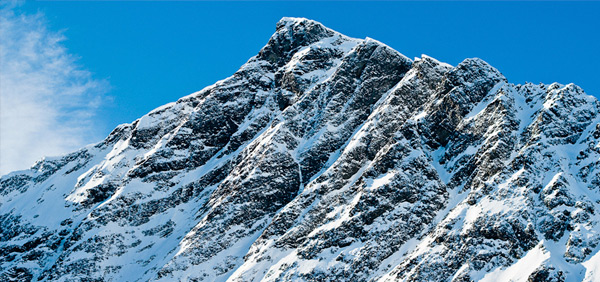
After a year-long campaign, the Knight-Risser Prize for Western Environmental Journalism has reached its goal of raising $100,000 in donations that – after being matched 2:1 by the John S. and James L. Knight Foundation – will create a permanent fund for the annual prize and symposium.
The Center and the John S. Knight Journalism Fellowships, which co-administer the prize and symposium, would like to extend their profound gratitude to all those who were able to contribute to the recognition and advancement of western environmental reporting.
Read more at the Knight Risser Prize for Western Environmental Journalism »
Saving California's Golden Grasslands

Photograph by John Krzesinksi via Flickr
The natural beauty of Northern California's grasslands is a paradoxical thing. There is little that is natural about it.
For many years, this caused no end of consternation. Early explorers, missionaries and ranchers were unsettled by constant fires set by Indians to keep grasslands open, producing seeds and attracting wildlife. In more recent times, environmentalists have battled to get rid of cattle, which brought new grass species to California, pushing aside native plants in almost all of the state's grasslands.
Those emerald green hills of spring and summer golden waves of windswept beauty? Turns out they're an impure product of human history. But in the Bay Area, ranchers and environmentalists are coming "full circle," in the words of rancher Scott Stone, to fully embrace this paradox and work together to ensure that these "working landscapes" continue to work.
READ MORE IN THE SAN FRANCISCO CHRONICLE »
READ MORE ABOUT OUR UNCOMMON DIALOGUE ON CALIFORNIA RANGELANDS »
Join the Radio Conversation: Community Newspapers and the Rural West

Data visualization of U.S. weekly newspapers in 2010, in white. View interactive map »
The Center's creative director, Geoff McGhee, will be talking about the Rural West Initiative's recent report on community journalism on KUER Public Radio's live program RadioWest on Monday morning, August 8, at 10am Pacific Time. Geoff will be talking his report on the relatively good health of small-town and rural newspapers – compared to the crisis that big-market papers are enduring – and the Center's data visualization showing the growth of newspapers across the United States since 1690.
Appearing with Geoff will be the broadcast journalist and educator Judy Muller, a contributing editor at the Rural West Initiative, and author of the well-received book Emus Loose in Egnar, Big Stories from Small Towns. McGhee and Muller will talk about the state of small-town and rural newspapers and take listener questions about community journalism in the West.
The program will be broadcast live on Monday, August 8, at 10am Pacific Time (11am Mountain Time) on KUER FM 90.1 in Salt Lake City and the SiriusXM Public Radio channel on satellite radio. Callers can join the conversation by calling (801) 585-WEST or emailing [email protected]. The archived broadcast will be available for playback on KUER's website and as a podcast on iTunes.
Waru! at Jasper Ridge Biological Preserve

By Judee Burr
B.S. Candidate Earth Systems, 2012
B.A. Candidate Philosophy, 2012
 Waru means fire. Looking down at the blackened ground, it was hard to believe what I have been reading for the past month – that fire could be beneficial, even necessary to the health of a landscape. I had just watched firefighters set 1.2 acres of grassland aflame for a prescribed burn at the Jasper Ridge Biological Preserve (JRBP). In the aftermath of the burn, researchers will study the effects of wildfire in grassland restoration, work that is especially important today as we reevaluate the role that fire should play in our land and forest management practices.
Waru means fire. Looking down at the blackened ground, it was hard to believe what I have been reading for the past month – that fire could be beneficial, even necessary to the health of a landscape. I had just watched firefighters set 1.2 acres of grassland aflame for a prescribed burn at the Jasper Ridge Biological Preserve (JRBP). In the aftermath of the burn, researchers will study the effects of wildfire in grassland restoration, work that is especially important today as we reevaluate the role that fire should play in our land and forest management practices.
Lighting the land on fire may be unfamiliar to me, but it is a practice that has shaped California’s landscape. At the Bill Lane Center for the American West, I have been working on a comparative study of the policies that govern fire management in the United States and Australia, and the long history of fire in America that has molded these policies. For thousands of years, Native Californians used fire to hunt, for pest management, to sustain the plants important for basketry, and to provide food for the animals they hunted. In her book “Tending the Wild”, Kat Anderson describes the biologically diverse landscape that thrived under human supervision – burning was caring for the land. When European settlers arrived, they were not confronted with a “pristine” wilderness, but land that had been very deliberately tended and shaped by people to sustain their communities.
Examining The “Global West”
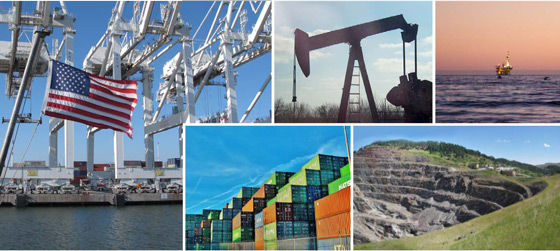
We live in a global West. Even the most remote rural areas of the American West are plugged into the global economy. This has long been true. And it is even more so today. The connections between the local and the global run from the simple and straightforward to the complicated. In the current issue of High Country News, reporter Jonathan Thompson traces some of the connections that constitute this “Global West” through production and trade of natural resources, particularly energy and minerals.
While Thompson reported on this story for High Country News in Douglas, Wyoming, and other parts of the West, researchers here at the Bill Lane Center's Rural West Initiative closely examined trends in direct foreign investment and the effect of global demand on the energy sector, which is booming in the West. Robert Jackman, a Stanford graduate student in public policy, wrote a sidebar for Thompson's story exploring three future scenarios for global energy demand and its impact on the West. Graduate students in computer science working here at the Bill Lane Center created an interactive online map of current foreign investment in energy and mining operations in the West to accompany the reports.
Jackman’s article for High Country News was based on his in-depth report -- the first in our Rural West Initiative Working Paper series -- is available here:
Working Paper: “Fossil Fuels, Foreign Trade, and Foreign Investment in the American West”
READ MORE AT THE RURAL WEST INITIATIVE »


